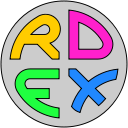
News
rdex installation as part of Sounding DIY III: Vitalist Materialism at HOP Projects CT20 06-15 December 2019 in Folkestone, United Kingdom. Check out the rdex-server online here at /iii/ now that the exhibition is over.
rdex performance at LiWoLi festival 12-14 May 2011 in Linz, Austria. FlavourCollider installation at Future Everything festival 11-14 May 2011 in Manchester, United Kingdom.
rdex presentation and performance at Piksel festival 18-21 November 2010 in Bergen, Norway. rdex presentation at Pixelache Helsinki 2010! Check out the slides including photos of the Kiblix installation online here at /pixelache10/. rdex installation at Kiblix! Check out the rdex-server online here at /kiblix/ now that the festival is over.
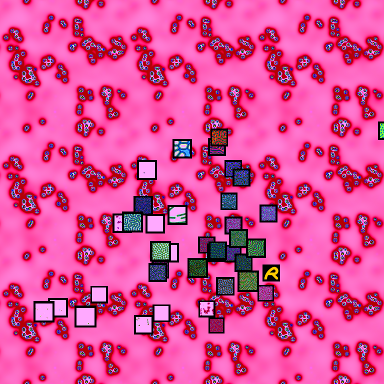
rdex-client
rdex-client is an installation that explores in an autonomous hyperspace mathematical model, searching for interesting emergent behaviour (life-alike, alife).
The model is a kind of continuous non-linear cellular automaton, based on partial differential equations representing chemistry of two reagents involving reaction and diffusion.
The mathematical equations of the model have four parameters, that need to be set to concrete values when running the simulation. rdex-client explores this 4D parameter space at random.
rdex-client analyses the behaviour that emerges from the system, moving on to a new set of parameters if it fades into unchanging uniformity or explodes into erratic numerical instability. Much more time is spent evolving the cellular automaton when neither of those alternatives occurs: when it finds something really quite interesting...
Keywords: emergent behaviour, artificial chemistry, hyperspace exploration
Video: rdex 2009-11-01
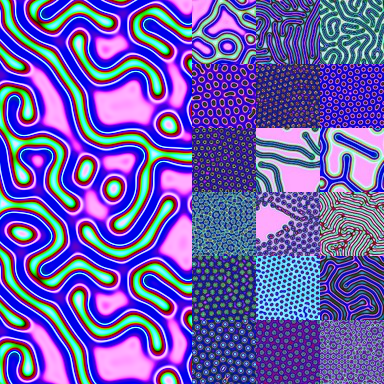
rdex-server
When rdex-client finds interesting behaviour, it uploads a snapshot to rdex-server along with the results of a few image analysis algorithms. The most recent interesting patterns found by rdex-client are shown at the top of the page.
rdex-server provides an interface to browse this collection by similarity to a chosen target or focus point. The target is shown full size on the left of the page, with the most similar patterns displayed to the right.
The default metric is to choose nearby points in the input 4D parameter space. The colour metric compares the resulting images' colour histograms.
The texture metric compares some output pattern texture features (namely coarseness, contrast, and directionality for each of U and V). Finally the segment metric compares the sizes of contiguous regions in the output pattern.
Keywords: data mining, image similarity, hyperspace exploration
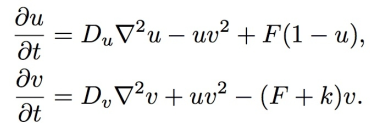
Mathematics
rdex-client models a reaction-diffusion system, specifically the Gray-Scott reaction (equation pictured). The simple rules can lead to complex emergent behaviour similar to that described in Stephen Wolfram's Universality and Complexity in Cellular Automata.

Technology
rdex-client is written in C using OpenGL with GLSL, as well as CURL and POSIX Threads.
rdex-server is written in Python using WSGI within Apache HTTP Server, as well as WebOb, PIL, and MySQL.
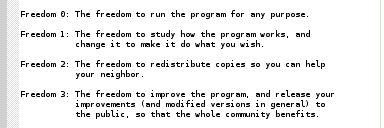
Free Software
rdex is free software.
rdex-client uses
GPLv3+ license
rdex-server uses
AGPLv3+ license
rdex website uses
GFDLv1.3+ license
